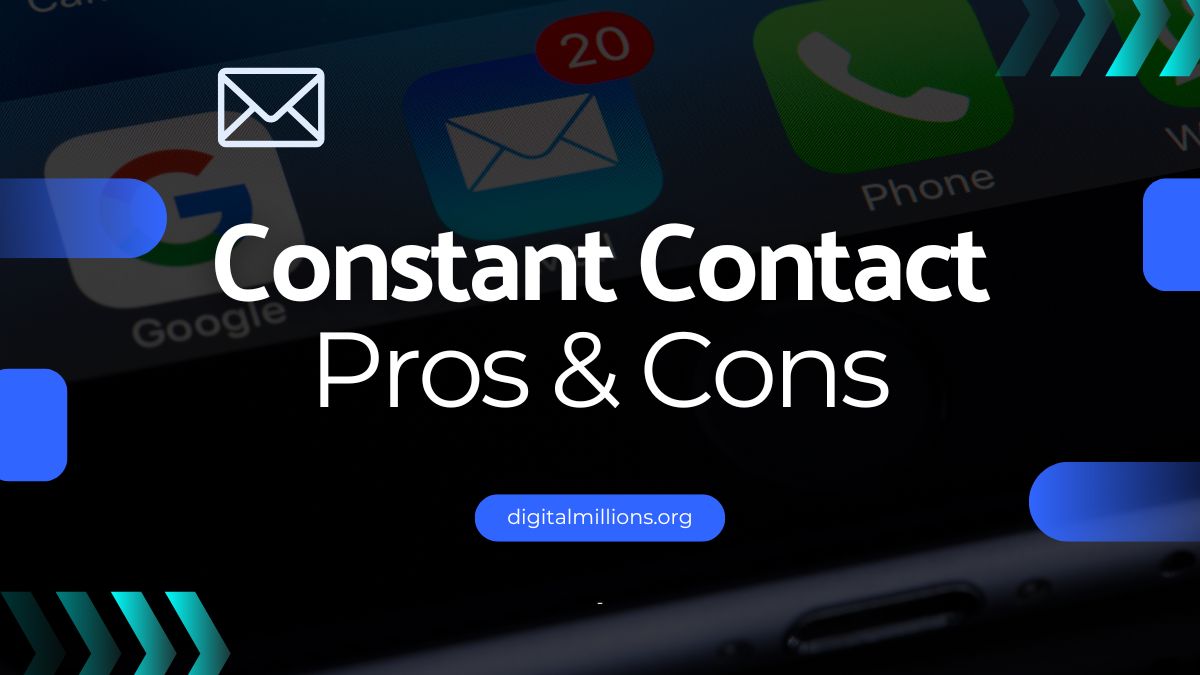Are you looking for a fun and lucrative way to earn some extra cash? Selling Canva templates might be the perfect opportunity.
Canva templates are pre-designed layouts that can be easily customized to create stunning social media posts, flyers, business cards, invitations, and more. They’re a fantastic starting point for anyone who wants to create professional-looking designs without spending hours starting from scratch.
The best part about selling Canva templates is that it’s incredibly easy to get started. You don’t need a large investment.
And once your templates are listed for sale, you can enjoy passive income as customers purchase your designs. Plus, there’s a growing demand for time-saving templates among businesses, bloggers, and individuals.
In this guide, we’ll walk you through everything you need to know about making money by selling Canva templates.
Ready to turn your creativity into cash? Let’s dive in!
Getting Started with Canva
Canva is super easy to learn. Even if you’ve never used any design tools before, you’ll find Canva simple to use.
It has so many templates, pictures, and fun elements that you might feel a bit overwhelmed at first. But don’t worry! Unlike some other design programs, Canva doesn’t take long to figure out.
Most people get comfortable with it in just a day or two.
Creating a Canva account is quick and painless.
Just head to Canva’s website and sign up.
You can use your email or even link it to your Google account. Once you’re in, you’ll see a world of design possibilities at your fingertips.
Now, you might be wondering if you need to pay for Canva Pro.
The short answer is no, but it can be helpful.
With a free account, you can make and sell templates. However, there’s a catch. You’ll have to give customers the link to your original file, which could be risky if they accidentally change it.
Canva Pro solves this problem. It lets you create special links for customers that keep your original safe.
Plus, you get access to fancier templates, elements, and photos.
Here’s a quick comparison:
Free Canva:
- Basic features
- Limited templates
Canva Pro:
- More templates
- Safer sharing
- Premium elements
If you’re not sure, try Canva Pro’s 30-day free trial. You can test it out without spending a dime!
Choosing Your Product
Canva lets you make all sorts of cool templates. You can create anything from Instagram posts to business cards. The possibilities are huge!
Some popular options include:
- Social media posts
- Flyers and posters
- Planners and worksheets
- Logos and brand kits
Think about what you enjoy designing. Do you like making pretty Pinterest pins? Or maybe you prefer creating professional-looking brochures? Choose something that’s fun for you.
It’s a smart choice to identify a niche.
Finding your niche is like picking your favorite flavor of ice cream. You want to choose something you like, but that others will enjoy too.
Ask yourself:
Who do you want to make templates for?
Maybe it’s for small business owners or busy moms. Think about what problems your templates could solve for them.
Don’t try to please everyone. It’s better to focus on a specific group. This way, you can become known as the go-to person for that type of template.
Before you dive in, it’s smart to check if people actually want what you’re planning to make. Here’s how:
Visit places like Etsy and Creative Market. Look at what’s selling well. Read comments to see what customers are asking for.
This can give you great ideas!
Also, keep an eye out for upcoming holidays or events. People often look for special templates around Christmas, Valentine’s Day, or back-to-school time.
Just because there are other templates out there doesn’t mean the market is full. New businesses start all the time, and they all need designs. Your unique style could be just what someone is looking for!
Create Canva Templates
Making templates in Canva is pretty straightforward.
First, pick what kind of template you want to make. Canva has preset sizes for lots of different things.
To start, open Canva and choose your template type. You’ll see a blank canvas with the right size already set up.
Now comes the fun part – designing!
Remember, you can’t just use Canva’s pre-made templates to sell. That’s not allowed. You need to make your own from scratch.
But don’t worry, it’s not as hard as it sounds!
Here are some cool tricks to make your designing easier:
- Use the transparency tool to make elements see-through
- Lock elements you don’t want to move by accident
- Try text effects to make your words pop
You can even use different fonts in the same text box. Play around with the line height to move text closer or farther apart.
When you’re looking for design elements, try searching for things like “abstract lines” or “paint brush strokes”.
You’ll find lots of cool stuff to use!
To make templates that people want to buy:
- Keep it simple. Make sure your templates are easy to edit.
- Stay on trend. Look at popular designs for inspiration.
- Be unique. Add your own style to make your templates stand out.
- Think about your customer. What will make their life easier?
- Test your templates. Make sure they work well before you sell them.
Don’t get discouraged if your first designs aren’t perfect. Everyone starts somewhere! Keep practicing and you’ll get better and better.
The goal is to make templates that are both pretty and useful. If you can do that, you’re on the right track to making templates that sell!
Prepare Your Product for Sale
Once you’ve finished your awesome templates, it’s time to get them ready for customers. First, you’ll need to make an editable link.
Here’s how:
- Click “Share” in Canva
- Choose “Share Link”
- Select “Share Link to use as template”
- Copy the link
This special link lets customers edit a copy of your template without messing up your original. Pretty cool, right?
Next, make a PDF guide. Create a new A4 design in Canva. Add your template link to a button or text. Then, download it as a PDF. This guide will help your customers use your templates.
You can using mockups to showcase your templates.
Mockups are like dressing up your templates for a photoshoot. They show customers how your templates look in real life.
Here are some places to find mockups:
- Placeit
- Smartmockups
- Freepik
When using mockups, be honest. Show your template exactly as it is. Don’t add extra stuff that’s not really there.
You want happy customers, not disappointed ones!
Next step? Writing product descriptions and usage guides.
Your product description is like a mini-ad for your template. Make it catchy and clear. Tell people:
- What the template is for
- Why it’s awesome
- What they’ll get when they buy it
Keep it short and sweet, but give all the important details.
A usage guide is super helpful for your customers. It should explain:
- How to access the template
- How to edit it in Canva
- Any special tips for using your template
Remember, good descriptions and guides can turn browsers into buyers. They also help customers use your templates successfully.
List Your Product on Marketplaces
Now that your templates are ready, let’s talk about where to sell them.
You’ve got a few great options:
- Marketplaces (Etsy, Creative Market, etc.)
These are like big online malls for digital products. Lots of people already shop here, which is great! Some popular ones are:
- Etsy
- Creative Market
- Gumroad
These sites make it easy to start selling. They handle payments and bring in customers. The downside? They take a cut of your sales.
- Your own website or blog
Having your own site gives you more control.
You can design it how you want and keep all the profits. But it’s a bit harder to set up and you’ll need to bring in your own customers.
If you already have a blog, you can add a shop section to sell your templates. It’s a great way to use traffic you already have.
- E-commerce platforms (WooCommerce, Podia)
These are tools for selling products online.
WooCommerce works with WordPress websites. Podia is made just for digital products like your templates.
Podia is very easy to use.
You don’t need to know any technical stuff. It’s great if you want your own site but don’t want to deal with the hard parts.
No matter where you sell, listing your products well is key.
Here are some tips:
- Use clear, attractive photos of your templates
- Write descriptions that explain why your templates are awesome
- Use keywords people might search for
- Price your templates fairly
- Group similar templates together
Remember, your listing is often the first thing customers see. Make it count!
If you’re using marketplaces like Etsy, learn about their search system. This can help more people find your templates.
Don’t be afraid to try different places to sell. You might find one works better for you than others. The important thing is to get your templates out there where people can find them!
Market Your Canva Templates
Getting the word out about your templates is super important. Social media is a great way to do this! Here are some ideas:
- Share sneak peeks of your templates on Instagram
- Post design tips on Twitter
- Join Facebook groups for small business owners or designers
Remember, don’t just post about your products all the time.
Share helpful tips and pretty designs too. This way, people will want to follow you for more than just your sales posts.
Try to post regularly, but don’t stress if you can’t post every day.
Quality is more important than quantity!
You also need to focus on SEO optimization for marketplaces and even your own site.
SEO means making it easy for people to find your templates when they search online. It’s important for both marketplaces and your own website.
For marketplaces like Etsy:
- Use keywords in your titles and descriptions
- Fill out all the tag fields
- Update your listings regularly
If you have your own site:
- Write blog posts about design tips
- Use alt text for your images
- Make sure your site loads quickly
Don’t stuff your writing full of keywords. Just use them naturally where they fit.
Pinterest is also awesome for selling templates because it’s all about pretty pictures! Here’s how to use it:
- Make a business account on Pinterest
- Create pins showcasing your templates
- Use keywords in your pin descriptions
- Make boards for different types of templates
If you have your own website, you can set up “rich pins”. These show extra info like prices right on Pinterest.
Pinterest is like a search engine for pictures. People often use it when looking for design ideas, so it’s perfect for template sellers!
Template Pricing strategies
Figuring out how much to charge can be tricky. You want to make money, but you also want people to buy your stuff.
Here are some tips:
- Look at what others charge for similar templates
- Think about how long it took you to make the template
- Consider offering bundle deals for multiple templates
Don’t be afraid to start a bit lower and raise your prices as you get more popular. It’s okay to experiment with different prices to see what works best.
Manage customer expectations and support
Happy customers are the best for your business.
Here’s how to keep them smiling:
- Be clear about what they’re getting in your product description
- Respond to questions quickly and nicely
- Make a simple guide on how to use your templates
If someone has a problem, try to fix it fast. Good customer service can turn an unhappy buyer into a loyal fan!
Expand your template offerings
As your business grows, you might want to make more types of templates.
Here are some ideas:
- Create seasonal templates (like for holidays)
- Make templates for different industries
- Try new styles or trends
Listen to what your customers ask for. They might give you great ideas for new templates!
You could also think about making:
- Template bundles
- Customization services
- Video tutorials
It’s better to do a few things really well than to do lots of things just okay. Focus on quality as you grow.
Growing your business takes time, so be patient. Keep making great templates, treat your customers well, and keep learning. Before you know it, you could have a thriving template business!
Final Words
Selling Canva templates is a profitable business model that leverages your creativity and design skills. As we’ve explored, it’s a straightforward process with immense potential for passive income.
The key to success lies in creating templates that are not only visually appealing but also easy to use and valuable to your target audience. Stay updated with design trends, listen to customer feedback, and continuously refine your products and strategies.
Whether you choose to sell on popular marketplaces like Etsy and Creative Market, or through your own website, the possibilities are endless.
With dedication, patience, and a bit of marketing savvy, you can build a thriving business selling Canva templates.
So, why wait? Dive in, start creating Canva templates today!





